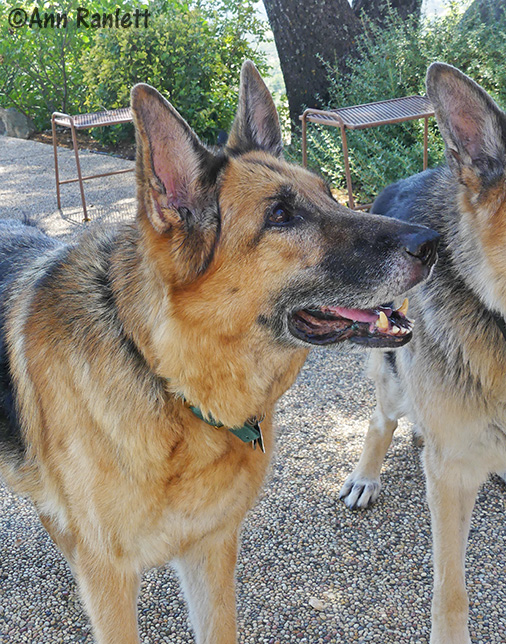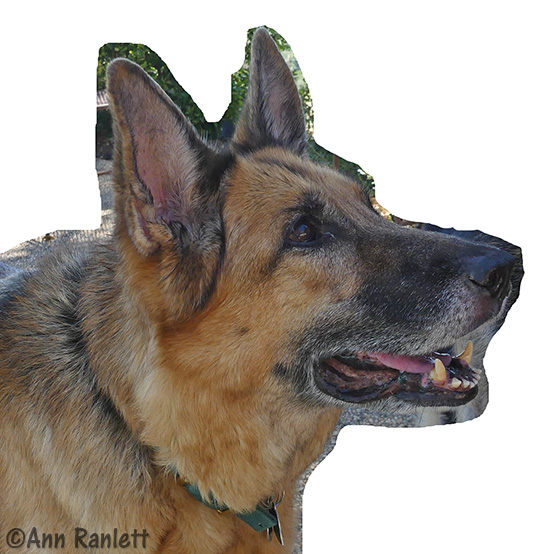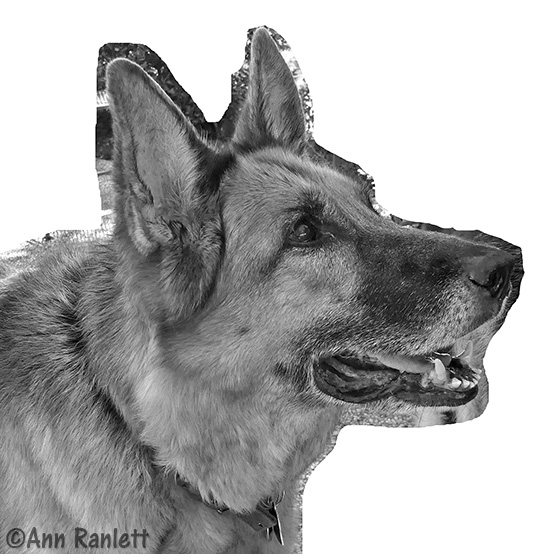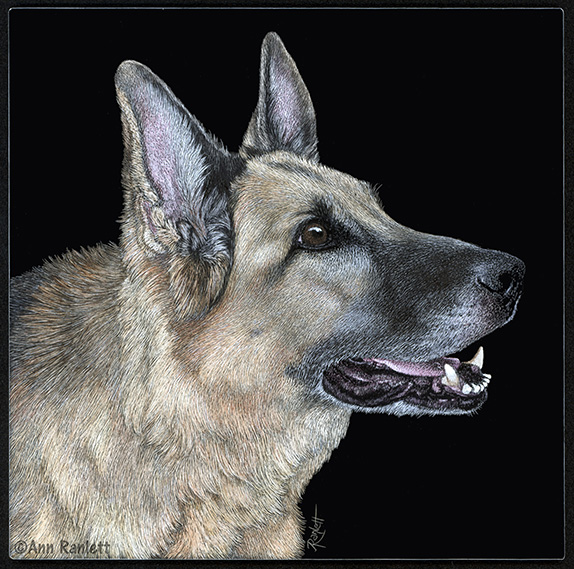Why Clear, High Quality Photos are Essential!
Ann took her own photos (many of them!) of Abby the German Shepherd. She selected a few of the best photos, and then, in consultation with her client, they chose the photo below for the portrait.

This photo is clear with good, visible detail. There are no shadows hiding critical areas, there is no distortion due to a strange camera angle, and the photo was taken so that the dog dominates the picture. Ann will use Photoshop to enhance photos as needed to pull out the most possible detail, but it helps immensely to start with a good photo.
By having such an image, Ann is able to capture the pet’s likeness much more easily, as she doesn’t have to guess about what she’s seeing in the photo reference.
Because Ann is very concerned about accuracy and correct anatomical detail, if the photos she has to use are indistinct, she will not be as satisfied with the resulting portrait, and it’s likely that the client won’t be either. If she has to guess or look through additional reference material for detail, that increases the time involved to produce the portrait, and, consequently, the price.
Each animal is unique – having the best quality photos will result in a portrait that looks like YOUR pet and not just any representative of that breed!
In the case where a pet has passed away, that obviously limits the photo options. If available photos aren’t the best quality, Ann may be able to create a portrait in a smaller format, which doesn’t require as much detail.

The reference photo, cropped to square format, with the background erased

The cropped photo, converted to greyscale, to show the values of the reference image. This allows Ann to create the proper values in the portrait with scratching, prior to adding color.

The finished portrait. 6″ x 6″, scratchboard with watercolor


